Name Walatta Petros | ||
 | ||
Walatta Petros (Ge'ez: ወለተ፡ጴጥሮስ?, Wälättä P̣eṭros, 1592–1642) is a female saint in the Ethiopian Orthodox Tewahedo Church. Her hagiography, The Life-Struggles of Walatta Petros (Gädlä Wälättä P̣eṭros) was written in 1672. She is known for resisting conversion to Roman Catholicism, forming many religious communities, and performing miracles for those seeking asylum from kings.
Contents
- Early life
- Becoming a nun
- Resisting Roman Catholicism and the King
- Later life
- Names
- Hagiography
- Scholarship
- References

Early life
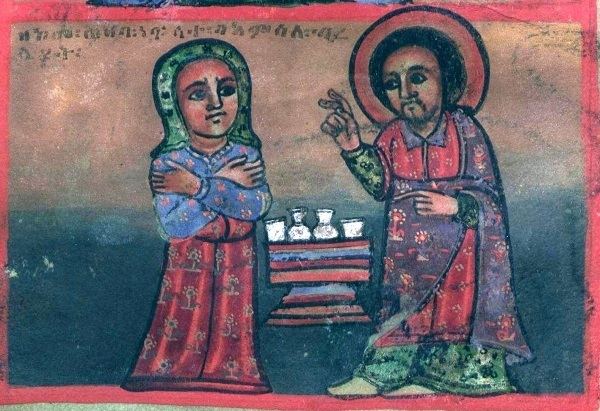
Walatta Petros was born in 1592 into a noble family with hereditary rights to lands in southern Abyssinia. Her father and brothers were officials at court. Walatta Petros was married at a young age to a man named Mälkə’ä Krəstos, one of King Susenyos's counselors. She gave birth to three children who all died in infancy and she decided to become a nun.
Becoming a nun

After Jesuit missionaries privately converted King Susənyos from Ethiopian orthodoxy to Roman Catholicism in 1612, he called on Walatta Petros's husband to repress the anti-Catholic rebellion started in 1617. When Mälkə’ä Krəstos left to fight the rebellion, leading bishops in the Ethiopian monasteries on Lake Ṭana assisted Walatta Petros to leave her husband and join them. After arriving at a monastery on Lake Ṭana, she took a vow of celibacy and shaved her head to become a nun in the Ethiopian Orthodox Täwaḥədo Church, refusing to convert to Roman Catholicism. However, church and court officials urged her to return to her husband, because he was destroying the town where she was hiding. She returned home, but when she found out that her husband had supported the killing the patriarch of the Ethiopian Orthodox Täwaḥədo Church, she left him for the final time, becoming a nun at the age of 25 in 1617.
Resisting Roman Catholicism and the King
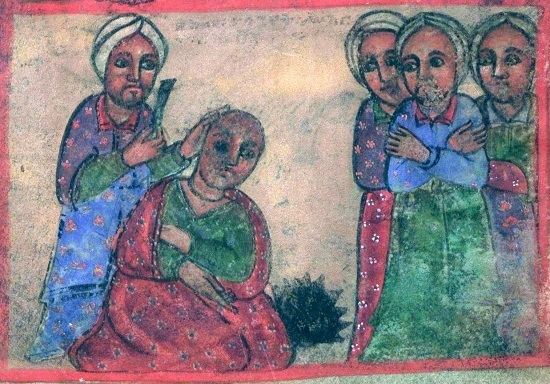
In 1621, King Susənyos forbid the teaching of Ethiopian orthodoxy and Walatta Petros began to protest the king's abandonment of Ethiopia’s faith to embrace foreign beliefs and rituals. She was called before the court in 1622 for these protests, and the king wanted to kill her, but her family was able to dissuade him. She then moved to the northern regions of Waldəbba and Ṣällämt and began preaching that people should reject the faith of the foreigners and never mention the name of the king during the liturgy. She was again called before the court in 1625 for this treason, and this time her husband dissuaded the king from killing her, urging him to send the leader of the Jesuit priests, Afonso Mendes, to try to convert her. When Mendes was unsuccessful, the king sent her into exile in Sudan for three years.
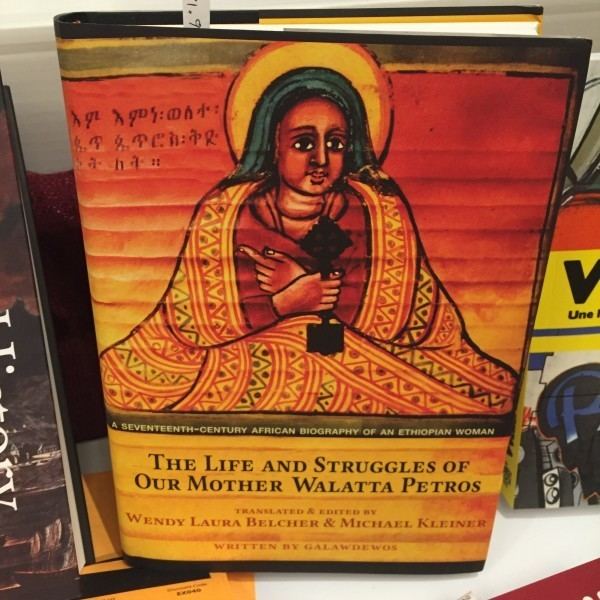
This was the beginning of her leadership of the religious communities that formed around her of those seeking to escape Roman Catholicismn. Over her lifetime, she set up seven religious communities—the first in Sudan, called Žäbäy (ca. 1627), and six around Lake Ṭana: Č̣anqʷa (ca. 1630), Mǝṣelle (ca. 1630), Zäge (ca. 1632), Dämboza (ca. 1637), Afär Färäs (ca. 1638), and Zäbol/Zämbol (ca. 1641).
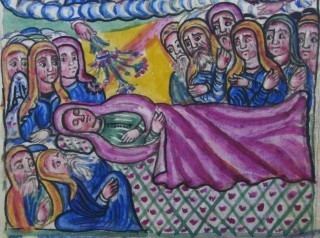
Meanwhile, in 1632, King Susənyos gave up trying convert the country to Roman Catholicism. His son Fasilädäs became king, and Fasilädäs worked to eradicate Roman Catholicism from the country. In 1650, Fasilädäs gave land for a monastery on Lake Ṭana, Qʷäraṭa, to be devoted to Walatta Petros. Since the 17th century, it has served as a place of asylum for those seeking to escape punishment by the king.
Later life
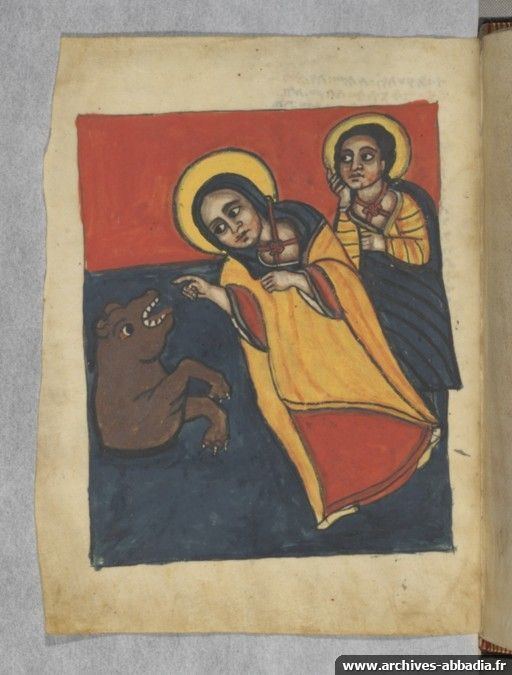
Walatta Petros continued as the abbess of her mobile religious community, leading it with her woman friend Ǝḫətä Krəstos and without male leadership. After a three-month illness, Walatta Petros died on November 24, 1642 CE (Ḫədar 17), at the age of 50, twenty-six years after becoming a nun. Her friend Ǝḫətä Krəstos succeeded her as abbess of her religious community, until her death in 1649.
Names
Walatta Petros's Ge'ez name is transcribed many ways online and in the scholarship, including the Library of Congress spelling Walata Péṭros and Walatta Pēṭros. Her name is a compound name, meaning "Daughter of [St] Peter," and cannot ever be shortened from "Walatta Petros to "Petros." Other spellings are Walata Petros, Wallatta Petros, Wallata Petros, Waleta Petros,Waletta Petros, Walete Petros, Walleta Petros, Welete Petros, Wolata Petros plus Walatta Pétros, Walatta Pietros, Walatta Petrus, and Wälätä P'ét'ros.
Hagiography
Walatta Petros is one of 21 Ethiopian female saints, six of whom have hagiographies. The saint's hagiography, Gädlä Wälättä P̣eṭros, was written down in 1672, thirty years after the saint's death. The author was a monk named Gälawdewos. He wrote it by collecting multiple oral histories from the saint's community, as well as adding his own thoughts. It has three parts: the biography, the miracles that happened to those who called on her name after her death, and two hymns (Mälkəˀa Wälättä Peṭros and Sälamta Wälättä Peṭros). Later, in 1769, others added more miracles, including those about the following kings: Bäkaffa, Iyasu II, Iyoˀas I, Ras Mikaˀel Səḥul, Yoḥannəs II, Täklä Giyorgis I and Tewodros II.
Over a dozen manuscript copies were made in Ethiopia. The first print edition was published in 1912, based on one manuscript. The first translation into another language, Italian, was published in 1970, In 2015, the first English translation was published.
Scholarship
Little was published on Walatta Petros in Western scholarship before the 21st century. Written before the corrected, full edition based on 12 manuscripts was published in 2015, incorrect information about her (i.e. birth and death dates, children, travel, and hagiography) appears on these websites, encyclopedia entries, histories, and journal articles: one published in 1902 in Russian and another in 1943 in Italian.
More has been published in the twenty-first century, almost entirely in English. The first was written by the French art historian Claire Bosc-Tiessé, who conducted field research at monasteries on Lake Ṭana about the creation of a royal illuminated manuscript of Gädlä Wälättä P̣eṭros. The Russian historian Sevir Chernetsov published an article arguing that Walatta Petros was a non-gender-conforming saint. The American literary scholar Wendy Laura Belcher argued that Walatta Petros was one of the noble Ethiopian women responsible for the defeat of Roman Catholicism in Ethiopia in the 1600s. Some journalism has been published about the saint as well.
Controversy has attended the English translation of the Gädlä Wälättä P̣eṭros, starting in October 2014 after one of the cotranslators, Belcher, started giving talks about her relationship with Eheta Kristos. and due to news coverage of the translation. Members of the Ethiopian Orthodox Täwaḥədo Church have stated online that “this book claims Walatta Petros is a lesbian” and have written many comments about sexuality on a Guardian article about the translation. Belcher has published a rebuttal on her website, titled “Controversy over Sexuality in the Gadla Walatta Petros." She has also published a scholarly article on the topic of same-sex sexuality in the hagiography.
